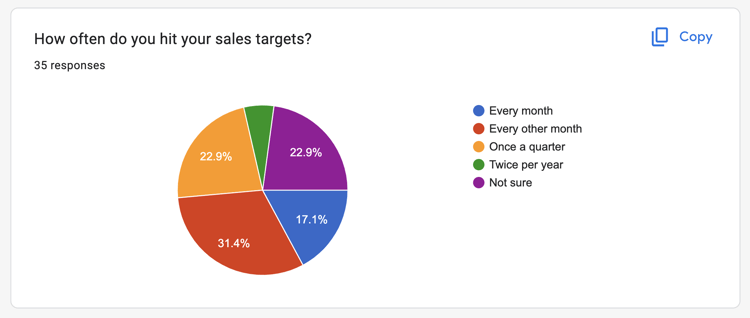I want to delve into a topic that I'm passionate about because through out my sales career and my many different roles, I've always been reminded that one of the keys to sales success is having a nice healthy pipeline.
However, now, as a sales consultant, I'm seeing more and more that pipeline building and management in Trinidad and Tobago and the wider Caribbean region is a major problem for businesses and entrepreneurs alike. While sales managers, senior executives, and entrepreneurs know the value of a healthy pipeline, they will tell you that it's not always smooth sailing when it comes to ensuring a steady flow of business opportunities.
The challenges I'm seeing with pipeline building can make even the most seasoned professionals break a sweat. But fear not, my friends, because in this article post, I'm going to explore the hurdles, understand their impact, and perhaps even discover some ways to overcome them. So, grab a pen and a seat and let's dive in.
Definition: What Is Pipeline Management?
Sales pipeline management is the process of tracking and analyzing the progress of potential sales deals or opportunities through various stages of the sales process. This involves identifying and prioritizing potential customers, nurturing relationships with them, and moving them through the sales funnel to close the deal ultimately.
Why Is Pipeline Management Important?
This is important because it helps sales teams to forecast their sales accurately and achieve their revenue targets. It also helps businesses identify areas where they need to improve their sales process and take corrective actions to optimize their sales performance.

Poor pipeline management impacts revenue growth: The above image represents results from an ongoing survey looking at the state of sales in the Caribbean. Source: OPAAT-SWY
What's The Impact of Poor Pipeline Management?
Poor pipeline management can have several negative impacts on a business. Here are ten outcomes of poor pipeline management:
- Inaccurate Forecasting: A poorly managed pipeline can lead to inaccurate sales forecasting, making it difficult for businesses to plan and allocate resources effectively.
- Missed Opportunities: When deals are not properly tracked and managed, there is a higher chance of missing out on potential sales opportunities. This can result in lost revenue and market share.
- Inefficient Resource Allocation: Poor pipeline management can lead to inefficient allocation of resources, such as salespeople's time and effort. This can result in wasted resources and decreased productivity.
- Longer Sales Cycles: A disorganized pipeline can lead to longer sales cycles as deals get stuck or delayed. This can impact cash flow and hinder business growth.
- Decreased Customer Satisfaction: When deals are not managed effectively, customers may experience delays, miscommunication, or a lack of follow-up. This can lead to decreased customer satisfaction and potentially damage the business's reputation.
- Increased Costs: Ineffective management of the sales pipeline can have detrimental effects on a business's finances. It can lead to wastage of valuable resources, higher costs in acquiring customers, and longer sales cycles. Ultimately, this can significantly impact the profitability of the business.
- Lack of Visibility and Accountability: Poor pipeline management can make it difficult to understand the sales pipeline and individual performance clearly. This can hinder effective decision-making and accountability within the sales team.
- Difficulty in Identifying Bottlenecks: Without proper pipeline management, it becomes challenging to identify bottlenecks or areas where deals are getting stuck. This can prevent businesses from implementing necessary improvements and optimizations.
- Inconsistent Sales Processes: A poorly managed pipeline can lead to inconsistent sales processes, making it difficult to replicate successful strategies and train new sales team members effectively.
- Missed Sales Targets: In the end, inadequate pipeline management can lead to the failure to achieve sales targets and revenue objectives, significantly hindering the overall prosperity and expansion of the business.
So what's the solution?
Now that we understand the impact of poor pipeline management, it's time to explore some solutions. Building a strong and efficient sales pipeline requires careful planning and execution. Here are four steps to help you improve your pipeline management and achieve sales success.
Step 1: Laying the Foundation
When I first started in sales, I had no idea where to begin. The thought of building a sales pipeline was confusing. But then, I realized that it all starts with a solid foundation. Like a house needs a strong base, your sales pipeline needs a clear understanding of your target market and customer personas.
Take the time to really get to know your ideal customers—their pain points, goals, and challenges. This will help you tailor your messaging and build lasting relationships.
Step 2: Prospecting and Qualifying Leads
Now that we have our foundation, it's time to roll up our sleeves and dive into prospecting. In my early days, I made the mistake of casting a wide net and hoping for the best, but that approach rarely worked. Instead, focus on quality over quantity.
Identify the most qualified leads that align with your target market and invest your time and energy into nurturing those relationships. Remember, it's not just about making a sale—it's about building meaningful connections.
Step 3: Engaging and Nurturing
Once you have your leads, it's crucial to engage and nurture them throughout their buying journey. Personalization is key here. Take the time to understand their unique needs and tailor your messaging accordingly.
Share valuable content and provide solutions to their problems. By building this rapport, you'll increase your chances of closing the deal and create loyal customers who will advocate for your brand.
Step 4: The Moment of Truth - Closing the Deal 😀
This is the moment when all your hard work pays off. However, it's important to remember that it's not just about making the sale and moving on. It's equally important to take a moment to celebrate your success and show gratitude towards your customers. Demonstrating appreciation can help establish long-lasting relationships and generate referrals.
Conclusion:
In conclusion, it is natural for sales representatives to feel anxiety about not hitting their numbers and having uncomfortable conversations with their managers. The fear of losing their job can be overwhelming. However, these anxieties can be alleviated by implementing effective pipeline management techniques. So, sales reps and managers have confidence in your abilities, trust the process, and know that your hard work will pay off in the end.
Did You Find This Useful? Subscribe Here👇🏾 For More Articles To Step Up Your Sales Game.




COMMENTS